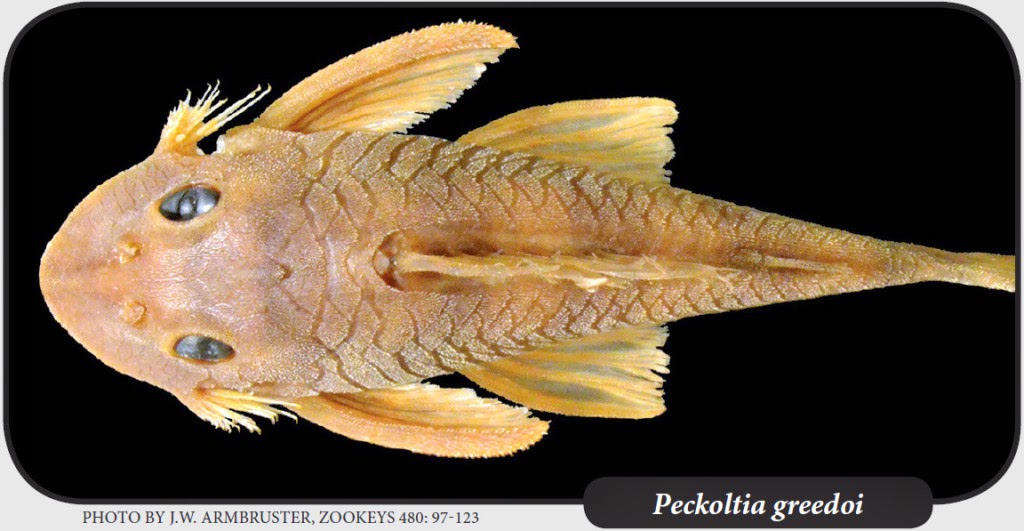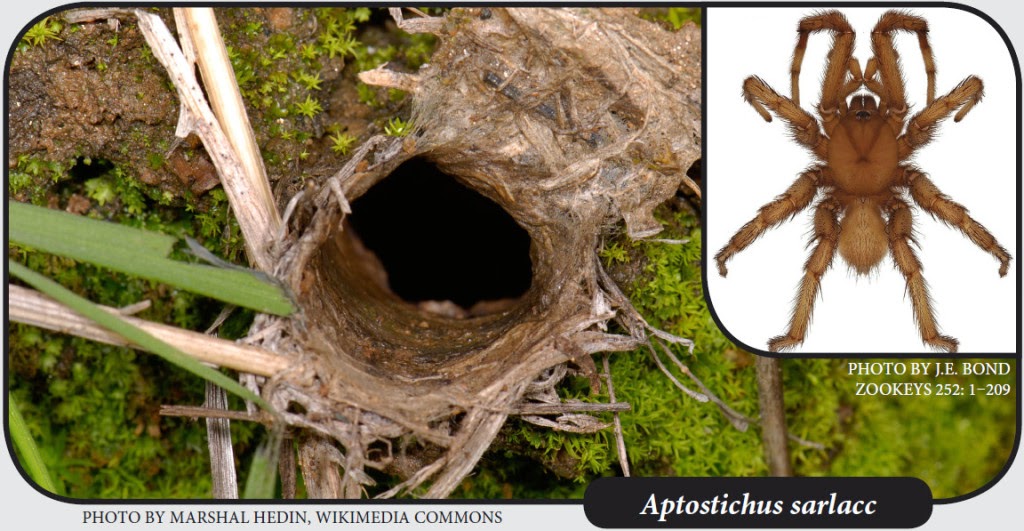A FISH CALLED GREEDO: 10 SPECIES NAMED AFTER STAR WARS
As the characters and creatures in Star Wars have often been inspired by the wildlife of our own planet, so have scientists around the world been inspired by Star Wars. While often new species that are discovered are named after their finders, their location or their morphological characteristics, it is not uncommon for scientists to name newly discovered species after famous individuals or fictional characters. Here’s a list of 10 species names inspired by that galaxy far, far away!
1. Peckoltia greedoi
Peckoltia greedoi is a species of armored catfish that lives in the Gurupí River of Brazil. It was discovered in 1998, and is characterized by dark, bulging eyes and a sucker mouth, not unlike the Rodian bounty hunter Greedo. When Jonathan Armbruster and his colleagues at the Auburn University Museum of Natural History were examining a specimen collected in 2005, one of his coworkers, Chris Hamilton, mentioned that the fish looked “like that guy from Star Wars”. When Armbruster found out that he had been talking about Greedo, they knew what the species name would be.
2. Han solo
While there is still debate about who shot first in the movie, in science Han Solo was first. Not only was the species Han solo created a decade before Peckoltia greedoi, the species also lived considerably earlier than the fish. Han solo is a species of trilobite, a group that is no longer extant. The fossils of H. solo, the only known species in the genus Han, were found in the Ordovician Zitai Formation of southern China. The original publication states that the genus was named after the Han Chinese, while the species name solo refers to the fact that it was the youngest fossil found to that date in its family. Turvey, however, later stated that his friends had dared him to name a species after a Star Wars character. Han Solo’s real-life alter-ego Harrison Ford also has the honor to have two species named after him. The spider Calponia harrisonfordi as a thanks for his help in a museum film production, and the ant Pheidole harrisonfordi to honor his work in nature conservation.
3. Tetramorium jedi
Tetramorium jedi is a ground-active ant from the subfamily Myrmicinae, which occurs on Madagascar. It is part of the T. jedi species complex, which also includes T. avaratra and T. pleganon. According to the authors Hita Garcia and Fisher, it is named after the “fictional, noble, and wise guardians of peace from the Star Wars universe created by George Lucas”.
4. Polemistus chewbacca, P. vaderi, and P. yoda
The earliest references to Star Wars in real-life taxonomy are from the year that Episode VI was in theatres, 1983. Entomologist Menke and Vincent named three newly discovered species of sphecid wasps after their favorite characters in Star Wars: Chewbacca, Darth Vader, and Yoda. And even though the wasps look nothing like the characters, Menke stated that he “wanted to add a little humor in the otherwise rather dry subject of taxonomy”.
5. Yoda purpurata
Yoda purpurata, or “purple Yoda”, is a species of acorn worm that lives in the North Atlantic Ocean. Acorn worms are invertebrates that are closely related to starfish. This little Jedi Master was discovered two and a half kilometers beneath the surface of the Atlantic Ocean by an ECOMAR remotely operated submersible that was in search for new species at the Mid-Atlantic Ridge. The red and purple worm has lips on either side of its head that reminded the researchers of the floppy ears of Yoda, and enteropneust expert Holland choose that as the name for this newly discovered genus.
6. Albunione yoda
Another species named after the famous Jedi Master is Albunione yoda, a marine isopod that occurs near Taiwan. Again sparked by a visual cue, researches used Yoda’s name in recognition of the “the slightly curved long lateral extensions of the female’s head”, that “resemble the head shape of Yoda with his long drooping ears”. And that is where the similarities end, because this member of the family Bopyridae is actually a parasite that lives inside the gills of a crab.
7. Aptostichus sarlacc
The genus Aptostichus is part of the group of spiders known under the colloquial name trapdoor spiders. These arachnids live in underground burrows that can be closed by cork-like or hinged doors. The species Aptostichus sarlacc, named after the Tatooine predator that also lives in an underground barrow, occurs in California, and is also known as the Sarlacc trapdoor spider. It is a rare species that is only known from two specimens collected in the Mojave Desert.
8. Agathidium vaderi
Black, round, and shiny. That is what triggered entomologists Miller and Wheeler to name this member of the family Leiodidae after the dark side villain Darth Vader. Agathidium vaderi is a slime-mold beetle that feeds on fungi that grows on rotting plant or animal material. Not really behavior suitable for a Dark Lord. In the same publication, other beetles from the genus Agathidium, which occurs in North and Central America, were named after United States politicians.
9. Darthvaderum greensladeae
Darth Vader, like Yoda, is in the privileged position to have three species named after him. In addition to a wasp (4) and a beetle (8), there is also a rather ominous looking mite from Australia. When studying orbatid mites under the scanning electron microscope in 1996, Hunt “immediately thought of Darth Vader, evil antihero of Star Wars”. That is why he named the newly discovered genus, which only holds the species Darthvaderum greensladeae, after the Dark Lord.
10. Midichloria mitochondrii
The bacteria Midichloria mitochondrii is a proteobacteria from the order Rickettsiales, who are known only to survive as intracellular endosymbionts (living in the cells of other beings). This particular species lives in the ovaries of female ticks of the species Ixodes ricinus, where it resides inside mitochondria. They have been named after the Midi-chlorians, the microscopic symbionts known in the Star Wars universe. The interaction of Midichloria mitochondrii with its host is currently unknown, but it probably does not grant the ticks with the ability to tap into Force.






Comments
Post a Comment